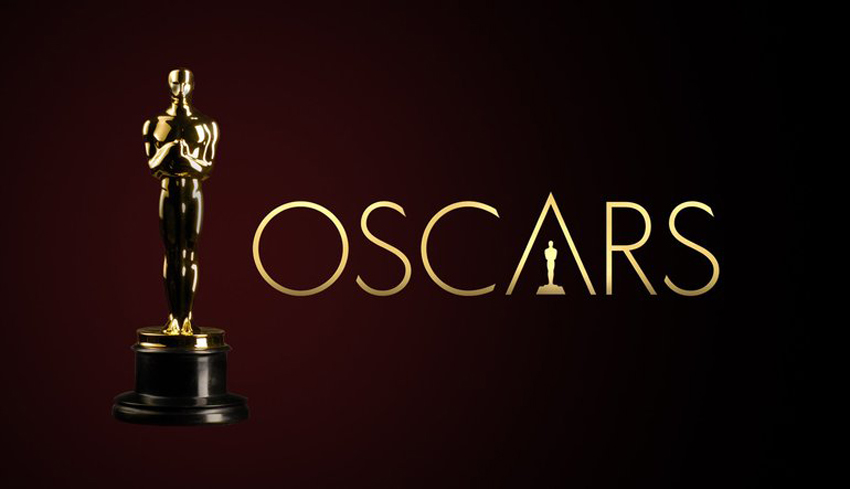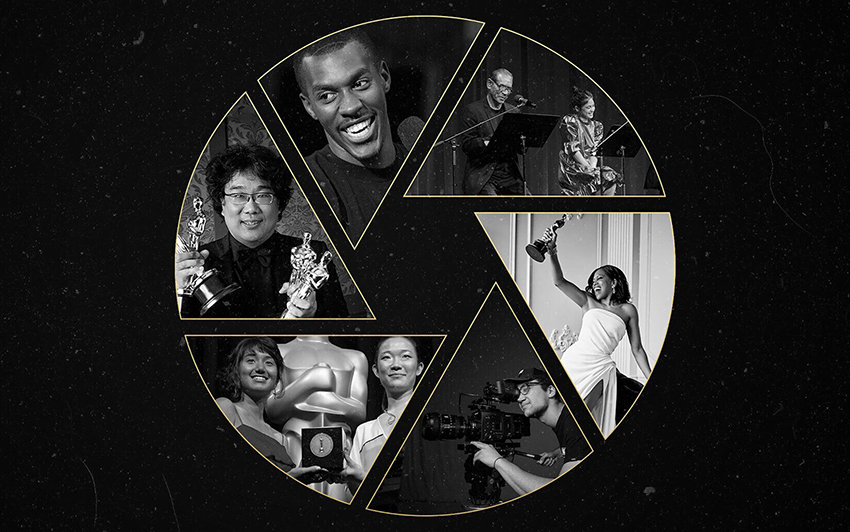
In 2016, the #OscarsSoWhite social campaign shone a searing spotlight on the fact that the world’s biggest and most prestigious film industry awards show was still marginalizing filmmakers of colour either in front of or behind the camera when it failed to include a single person of colour among 20 acting nominees, not to mention the frequent rarity of nominated directors being non-white males. In response, the Academy of Motion Pictures Science and Arts vowed to make a change (and not just the lip service of nominating Black Panther for some Oscars), and it would appear that it is actually putting its money where its mouth is.
The Academy started that change by upping the diversity in its own ranks and putting a cap on how long members can serve on its governing board, which has historically been filled almost exclusively by old white guys. But that was only half of the problem. In June, the Academy announced the Academy Aperture 2025, a multi-year plan to ensure the diversity of the films that it honours every year, by placing down strict new eligibility requirements. Now the details of that plan have been revealed.

Starting with the 94th Oscars in 2022, a series of new representation and inclusion requirements will begin rolling out until they are fully in effect for the 96th Oscars in 2024. These take the form of four new Standards, two of which have to be met for a film to be eligible for the grand prize of Best Picture. The Standards break down into smaller criteria subsets which determine whether they are met are not, as per below:
STANDARD A: ON-SCREEN REPRESENTATION, THEMES AND NARRATIVES
To achieve Standard A, the film must meet ONE of the following criteria:
A1. Lead or significant supporting actors
At least one of the lead actors or significant supporting actors is from an underrepresented racial or ethnic group.
• Asian
• Hispanic/Latinx
• Black/African American
• Indigenous/Native American/Alaskan Native
• Middle Eastern/North African
• Native Hawaiian or other Pacific Islander
• Other underrepresented race or ethnicity
A2. General ensemble cast
At least 30% of all actors in secondary and more minor roles are from at least two of the following underrepresented groups:
• Women
• Racial or ethnic group
• LGBTQ+
• People with cognitive or physical disabilities, or who are deaf or hard of hearing
A3. Main storyline/subject matter
The main storyline(s), theme or narrative of the film is centered on an underrepresented group(s).
• Women
• Racial or ethnic group
• LGBTQ+
• People with cognitive or physical disabilities, or who are deaf or hard of hearing
STANDARD B: CREATIVE LEADERSHIP AND PROJECT TEAM
To achieve Standard B, the film must meet ONE of the criteria below:
B1. Creative leadership and department heads
At least two of the following creative leadership positions and department heads — Casting Director, Cinematographer, Composer, Costume Designer, Director, Editor, Hairstylist, Makeup Artist, Producer, Production Designer, Set Decorator, Sound, VFX Supervisor, Writer — are from the following underrepresented groups:
• Women
• Racial or ethnic group
• LGBTQ+
• People with cognitive or physical disabilities, or who are deaf or hard of hearing
At least one of those positions must belong to the following underrepresented racial or ethnic group:
• Asian
• Hispanic/Latinx
• Black/African American
• Indigenous/Native American/Alaskan Native
• Middle Eastern/North African
• Native Hawaiian or other Pacific Islander
• Other underrepresented race or ethnicity
B2. Other key roles
At least six other crew/team and technical positions (excluding Production Assistants) are from an underrepresented racial or ethnic group. These positions include but are not limited to First AD, Gaffer, Script Supervisor, etc.
B3. Overall crew composition
At least 30% of the film’s crew is from the following underrepresented groups:
• Women
• Racial or ethnic group
• LGBTQ+
• People with cognitive or physical disabilities, or who are deaf or hard of hearing
STANDARD C: INDUSTRY ACCESS AND OPPORTUNITIES
To achieve Standard C, the film must meet BOTH criteria below:
C1. Paid apprenticeship and internship opportunities
The film’s distribution or financing company has paid apprenticeships or internships that are from the following underrepresented groups and satisfy the criteria below:
• Women
• Racial or ethnic group
• LGBTQ+
• People with cognitive or physical disabilities, or who are deaf or hard of hearing
The major studios/distributors are required to have substantive, ongoing paid apprenticeships/internships inclusive of underrepresented groups (must also include racial or ethnic groups) in most of the following departments: production/development, physical production, post-production, music, VFX, acquisitions, business affairs, distribution, marketing and publicity.
The mini-major or independent studios/distributors must have a minimum of two apprentices/interns from the above underrepresented groups (at least one from an underrepresented racial or ethnic group) in at least one of the following departments: production/development, physical production, post-production, music, VFX, acquisitions, business affairs, distribution, marketing and publicity.
C2. Training opportunities and skills development (crew)
The film’s production, distribution and/or financing company offers training and/or work opportunities for below-the-line skill development to people from the following underrepresented groups:
• Women
• Racial or ethnic group
• LGBTQ+
• People with cognitive or physical disabilities, or who are deaf or hard of hearing
STANDARD D: AUDIENCE DEVELOPMENT
To achieve Standard D, the film must meet the criterion below:
D1. Representation in marketing, publicity, and distribution
The studio and/or film company has multiple in-house senior executives from among the following underrepresented groups (must include individuals from underrepresented racial or ethnic groups) on their marketing, publicity, and/or distribution teams.
• Women
• Racial or ethnic group:
•Asian
•Hispanic/Latinx
•Black/African American
•Indigenous/Native American/Alaskan Native
•Middle Eastern/North African
•Native Hawaiian or other Pacific Islander
•Other underrepresented race or ethnicity
•LGBTQ+
• People with cognitive or physical disabilities, or who are deaf or hard of hearing
If you’re thinking that these new Standards sound heavy-handed, that’s because they are. But they also need to be. These are actually not hard to achieve and won’t require some massive upheaval of the industry to accomplish (some other awards shows, like the BAFTAs, already boast some of them), but just simply asking studios and filmmakers to be more inclusive on their productions has not worked for the most part. So this is the Academy actually trying to be the industry leader its prestige dictates that it should be, which is admittedly rather surprising for such a historically problematic institution. A pleasant surprise though.
Currently these new eligibility standards are just targeting the Best Picture category, with the Best Animated Film, Best Foreign Language Film, and Best Feature Length Documentary set to be addressed separately later.
Last Updated: September 9, 2020





















konfab
September 9, 2020 at 11:46
Who counts as one of those groups?
Does the one drop of black blood make you a bona-fide diversity candidate?
Insomnia is fun
September 9, 2020 at 15:03
The ones that complains the hardest on Twitter
For the Emperor!
September 9, 2020 at 14:27
Yes, white people are not allowed to win awards anymore. Finally!
*You are only allowed to work/associate who you want with if it fits a narrative*
For the Emperor!
September 9, 2020 at 14:27
“putting a cap on how long members can serve on its governing board” – this should be more widely implemented. For example governmental positions etc. If one does not “refresh” the pool once in a while, one will never get new ideas or direction!
Gavin Mannion
September 9, 2020 at 14:53
It’s such a tough one though as you don’t want to get rid of your best people just because they’ve been around 10 years.
Think about it in any sporting sense, the top players can last up to 2 decades in most sports. But yes you need to get rid of the dead wood at times
For the Emperor!
September 9, 2020 at 15:13
Agreed. It is extremely difficult to balance keeping the good people vs chopping the bad.
Insomnia is fun
September 9, 2020 at 15:03
You get an award and you get an award and you get an award! Finally, hopefully, the bitching will stop.
SagatatiaRZA
September 10, 2020 at 02:11
As far as representation in Hollywood goes, I can’t complain. I’m a white bloke, I get white representation all the time. I have no problem with diverse representation in any field. Where I find worry is when the creative process, and the choices that creatives make, become too bent by certain restrictions. For example, Person A is a screenwriter/director with a very specific experience that informs a very specific vision. This vision is just right; perhaps the next Citizen Kane (or whatever you consider greatness to be). Now he has said vision, but it needs a budget. Mr. Producer loves this idea, so much so that he demands it be pushed for an Oscar to boost sales. Person A’s vision has to be molded a bit here, prodded a bit there and cut a bit there to fit these guidelines. Fact is, at this point, you aren’t looking at their vision anymore. You’re looking at the influence of others instead. An insincere political parley instead of a true thought. It’s obviously not as simple as just that but at the same time, free thought is dying. What’s more is, it’s long since been debunked that the Oscars are influence by personal bias, but that instead it is wholly about who campaigns the hardest…which begs the question, what purpose does this fulfill at all? It’s an empty gesture.
HvR
September 10, 2020 at 04:17
Mmmm, standard C and D …. so it means only big movie studios movies and no longer those indie movies that everybody “loves” but nobody watches. Sounds like a good change.